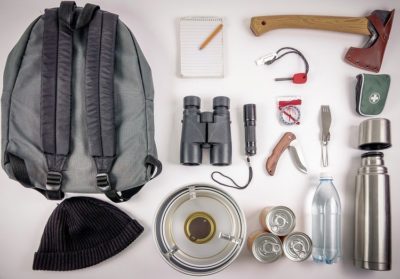Running a marathon is a huge achievement. It is a bucket list item for many people. As such, it can be daunting to approach preparing for your first.
Fortunately, training for a marathon is not as scary as it may seem.
All you need to do is break your training down into component parts. When you attack each part, one at a time, the task becomes manageable. Your future as a runner crossing the finish line goes from fantasy to something you can envision actual happening.
Before it can happen, you need to know how to break down your training. There are many elements when it comes to learning how to train for a marathon, and we have assembled this guide to walk you through all of them.
Read on to take the first step toward long-distance running.
Choose the Right Marathon for You
Not all marathons are created equal. Many factors distinguish races from each other. Here are a few to keep in mind when selecting a marathon to run.
Location
Do you prefer to run on city streets or out in the country? Do you like the energy that comes from a bustling metropolis, or do you want to get meditative with scenery that changes very little? Do you want to turn your marathon into an excuse for a vacation, or do you want to run close to home?
Your answers to these questions should determine the location where you seek out your marathon.
Time of Year
The location of the marathon you choose will come with a season built in. For instance, many marathons in the United States take place in the fall, when conditions are most favorable to running.
But you can find a marathon somewhere in the world at any time of year. Check out the Runner’s World Marathon Calendar to get a sense of when events are taking place near you.
Size
Marathons vary in size depending on their location and name recognition. If you do not want to run a course alongside a giant crowd of spectators, the big city marathons in Boston and Chicago may not be for you. Fortunately, there are marathons of every size to accommodate the full range of preferences.
The Course
Once you become a marathon connoisseur, you will start to appreciate the specific features of the courses themselves. These include things like elevation, loops, the type of terrain traversed, and sights along the way.
Stick to a Realistic Schedule that Teaches You How to Train for a Marathon
Once you have chosen your course, it is time to start training. There are nearly as many training regimens as there are marathon runners. Do your research to find the one that best fits your goals and current level of fitness.
A typical marathon training schedule lasts around 16 weeks. It can include anywhere from 12 miles of running per week on the low end up to 65 miles per week for the most advanced runners. If this is your first marathon, we recommend you start with a regimen that emphasizes general conditioning rather than breaking any specific personal record times.
A good training schedule will not be packed to the gills with running. Fitness expert Dr. Kristofer Chaffin emphasizes the importance of recovery, so make sure you are getting enough rest between workouts. If you are really serious about your training, you can learn to maximize your recovery.
Think About Your Food as Fuel
Your relationship to food changes as you train for a marathon. You should start to think more carefully about everything you put into your body and how it will affect your stamina and performance. This applies to how you eat even on rest days, but it is especially important immediately before, during, and after your runs.
Here is how we recommend bookending your runs from a nutrition standpoint.
About three to four hours before any run that lasts longer than 60 minutes, fuel up with carbohydrates. 50-60 grams should be sufficient, so don’t worry about finishing a stereotypical giant bowl of pasta. Beware of too much fiber, or you may find your bowels giving you trouble mid-run.
During your run, you want to keep yourself fueled with fast-acting carbohydrates. This is where gels, chews, and sports drinks come in handy. You can even use more natural alternatives like honey or fruit.
Within an hour after your run, eat a balanced meal of more carbs plus a substantial serving of protein. You should aim for 60-75 grams of carbohydrate and 20 grams of protein. Eggs, cheese, lentils, and lean meats are all excellent choices for the latter category.
Know Your Motivation
It is one thing to keep your body in tip-top shape, but there is a large mental component to running.
Why do you want to run this marathon? Be honest with yourself.
It does not have to be some deep, existential reason. “Because I want to see if I can do it” is as good a reason as any.
Some other common motivations include bonding with a partner or friend who is racing with you, increasing your general fitness level, and giving yourself an excuse to see a different part of the world where the race takes place.
Dress for Success
There are as many opinions on running gear as there are training programs. Try not to get too lost in the weeds. Instead, focus on the essentials.
To start with, you will need a reliable pair of shoes. Visit a specialty running store for your first pair and go prepared to spend around $100. The staff at these stores can analyze your gait and recommend shoes that will fit your specific needs.
From there, look for clothes that breathe and stay as dry as possible. Cotton is generally not your friend in this regard.
Whatever you do, do not make the mistake of using new gear on race day. You should instead wear clothes, shoes, and accessories you have broken in already.
Take Care of Yourself on Race Day
Once you arrive at the starting line, your preparation is done. You have learned how to train for a marathon, and all you can do is trust the work you have done up to that point. If you follow our suggestions, you will find yourself more than prepared for the marathon you chose.
While you are running the race, pay attention to your body and its needs. Running a marathon is more than a bullet point on a bucket list. It is a form of self-care.
You can enhance this active form of self-care even more by checking out our fitness guides. Happy trails!










